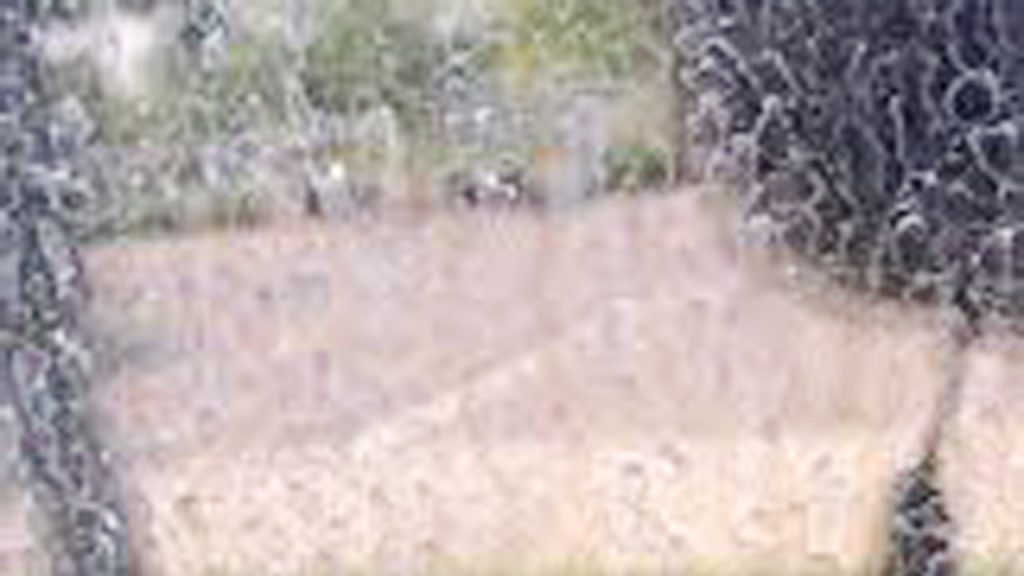Hard water spots are a common problem on windows, especially in areas with high mineral content in the water supply. These spots form when water evaporates, leaving behind mineral deposits, primarily calcium and magnesium.
These spots can become more stubborn and harder to remove, affecting the appearance and clarity of your windows. We will explore effective methods and techniques on how to clean hard water spots on windows, ensuring a streak-free finish and restoring the clarity of your glass.

Image by ntpropertycare
Hard Water Stains
Hard water stains can be a big problem. They leave white or cloudy marks on windows, fixtures, and surfaces. These marks come from minerals like calcium and magnesium in hard water.
When water with these minerals dries, it leaves behind a residue. This residue is hard to get rid of.
What Causes Hard Water Spots?
Minerals in the water cause hard water spots. When you use hard water for cleaning or washing, these minerals stay behind. They form limescale, a tough deposit to clean.
The longer these deposits stay, the harder they are to remove.
Why Are They Stubborn?
Hard water stains are stubborn because minerals bond strongly to surfaces. This creates a hard, sticky layer. Over time, this layer gets even harder to remove.
Also, different minerals can make stains more or less easy to clean. Knowing this helps us tackle hard water stains better.
Understanding hard water stains is key to removing them. By tackling the root cause, you can keep your windows and surfaces clean and streak-free.
Preparing Your Workspace
Before you start cleaning your windows, make sure your workspace is ready. You’ll need window cleaning supplies like a vinegar solution, lemon juice, baking soda, and commercial cleaners. Also, have clean, lint-free window cleaning tools like cloths or paper towels to wipe and rinse.
Setting up your workspace correctly makes cleaning windows easier and more effective. Having all your cleaning supplies ready lets you focus on cleaning without distractions.
Organize Your Supplies
Put your window cleaning tools and cleaning solutions in a place where you can easily reach them. This way, you can clean quickly and efficiently without interruptions.
- Gather a vinegar solution, lemon juice, and baking soda for natural cleaning options.
- Collect any commercial window cleaners you plan to use.
- Have clean, lint-free cloths or paper towels ready for wiping and drying.
Create a Clean and Organized Workspace
Clear the area around the windows you’ll be cleaning. Remove any clutter or obstructions. This gives you enough space to work and prevents spills or damage.
- Sweep or vacuum the floor to remove any dirt or debris.
- Wipe down the window sills and frames to ensure a clean surface.
- Lay down a protective cover, such as a towel or tarp, to catch any drips or spills.
By preparing your workspace well, you’ll get streak-free, sparkling clean windows. They’ll be free from stubborn hard water spots.
Tried and Tested Methods
There are many ways to remove hard water spots from windows. Vinegar and lemon juice are two natural ingredients that work well. They can break down the mineral deposits that stick to glass surfaces.
Vinegar: A Natural Cleaner
Vinegar is a great, eco-friendly cleaner for hard water stains. Mix equal parts white vinegar and water in a spray bottle. Spray it on the spots and let it sit for a few minutes.
Then, use a microfiber cloth to wipe it clean. Vinegar dissolves the mineral buildup, leaving your windows streak-free and shiny.
Lemon Juice: Another Acidic Option
Lemon juice, like vinegar, has citric acid that fights hard water spots. Squeeze fresh lemon juice on the stains and let it sit for a bit. Then, scrub with a soft-bristled brush or sponge.
The lemon’s acidity breaks down the mineral deposits, making them easy to remove. This natural cleaner is a good choice if you like the scent of citrus.
Both vinegar and lemon juice are natural window cleaners for hard water spots. They’re great DIY window cleaning solutions for a streak-free, sparkling finish.
Commercial Cleaners for Hard Water Spots
If vinegar or lemon juice don’t work on hard water spots, there are other options. Commercial products are made to remove these spots safely and effectively. They use strong ingredients to get rid of limescale buildup.
Some top commercial options for removing hard water spots include:
Limescale Removers
These products dissolve mineral deposits, making your windows shine. Brands like CLR, Lime-A-Way, and Calcium, Lime, and Rust Remover are popular.
Hard Water Spot Removers
These cleaners target white or cloudy spots. They use acids like sulfamic or phosphoric acid. Zep Hard Water Stain Remover and Seventh Generation Glass & Surface Cleaner are good choices.
Glass Cleaning Products
Some glass cleaners can also remove hard water spots. Look for ones with ammonia or alcohol, like Windex or Invisible Glass.
Always read and follow the instructions when using commercial cleaners. Test them on a small area first to avoid damage. The right product can make your windows clear and shiny again, even with tough buildup.
How to Clean Hard Water Spots on Windows?
Dealing with hard water spots on windows can be tough. But, with the right steps, you can make them disappear. I’ll show you how to use common items and professional cleaners to get your windows clean.
Vinegar and lemon juice are great for fighting hard water spots. Mix equal parts of either with water. Apply it to the spots, wait a few minutes, and then scrub gently. Rinse well and dry to see the difference.
For tough spots, try baking soda. Mix it with water to make a paste. Apply it with a damp cloth, let it sit, and then scrub. The baking soda will help remove the spots.
| Cleaning Method | Effectiveness | Effort Level |
|---|---|---|
| Vinegar and Lemon Juice | High | Low |
| Baking Soda Scrub | High | Medium |
| Commercial Cleaners | Very High | Low |
For really tough spots, use commercial cleaners. They have strong acids or abrasives. Follow the product’s instructions carefully.
Choose your method and work in small areas. Apply, scrub, and rinse well to avoid streaks. With some effort, your windows will shine again.
Preventing Future Hard Water Buildup
After removing hard water spots from your windows, it’s important to prevent them from coming back. By tackling the root cause, you can keep your windows clear and avoid constant cleaning.
Using Soft Water or Water Filters
Using a water softening system or a good water filter is a smart move. They lower the minerals in your water, reducing the chance of spots on your windows. A water softener or filter can save you time and effort over time.
Regular Window Maintenance
Regular cleaning is key to stopping hard water spots. Clean your windows often with a microfiber cloth and a gentle cleaner. This keeps your windows clean and stops new stains.
By addressing the causes of hard water spots, you can enjoy a clear view from your windows for years.
Tackling Stubborn Stains
Most cleaning solutions can get rid of hard water spots easily. But, some stains are really hard to remove. A gentle scrub with baking soda can be your go-to solution. It’s abrasive but won’t scratch your windows.
Scrubbing with Baking Soda
To remove tough hard water stains with baking soda, just follow these steps:
- Dampen the stained areas of your windows with water.
- Sprinkle a lot of baking soda on the wet spots.
- Use a soft-bristled brush or a damp cloth to scrub the baking soda in circles.
- Let the baking soda sit for a few minutes to work on the hard water stains.
- Rinse the windows well with clean water to get rid of any leftover baking soda.
- Use a microfiber cloth or paper towels to dry the windows and avoid streaks.
Baking soda is perfect for tough window cleaning and limescale removal. This simple baking soda scrub can help you get rid of stubborn hard water stains. Your windows will be clear and streak-free again.
Safety Precautions
When you’re cleaning hard water spots on your windows, safety comes first. To clean safely and effectively, remember these important steps.
Good ventilation is crucial, especially with strong cleaners. Open windows or turn on fans to keep the air fresh. This helps avoid breathing in harmful fumes.
Wear gloves to protect your hands. Rubber or latex gloves keep your skin safe from cleaners. Choose thicker, waterproof gloves for even more protection.
- Wear goggles or safety glasses with commercial cleaners. These chemicals can splash and hurt your eyes.
- If you have breathing problems, stay away from strong cleaners. Use natural options like vinegar or lemon juice instead.
By following these safety tips, you can clean your windows safely. This way, you’ll have a successful and easy cleaning experience.
Streak-Free Results
Getting your windows spotless and streak-free is the ultimate goal. The secret is in the drying and buffing techniques. Follow these expert tips to make your windows shine with a brilliant light.
Drying Techniques for Streak-Free Windows
To avoid streaks, dry your windows well after cleaning. Here are some effective drying methods:
- Use a high-quality microfiber cloth or squeegee to wipe away excess water, working in straight, overlapping strokes.
- If using a squeegee, make sure to wipe the blade clean after each pass to prevent water from streaking.
- Opt for a lint-free, absorbent towel to gently pat dry any remaining moisture.
- For a truly streak-free finish, consider using a window drying agent or a specialized window drying tool.
Buffing for a Shiny, Flawless Finish
After drying, buff your windows for a brilliant shine. Here’s how:
- Grab a clean, dry microfiber cloth and gently buff the surface of the window in circular motions.
- Apply a small amount of window polish or a window cleaning solution to the cloth and continue buffing to enhance the shine.
- For stubborn water spots or hazy residue, try using a soft bristle brush or a magic eraser to lightly scrub the surface before buffing.
Mastering these drying and buffing techniques will give you streak-free, sparkling windows. They will let the sunshine in with a dazzling, flawless finish.
Conclusion
Removing hard water spots from your windows is easier than you think. By knowing why these stains happen and using the right methods, you can make your windows sparkle. Use a mix of natural and commercial cleaners, and take steps to prevent future stains.
With a bit of effort and the right approach, you’ll soon have clear windows. You can try vinegar, lemon juice, or a good commercial cleaner. The most important thing is to tackle the problem early and keep your windows clean.
By following my advice, you’ll get rid of hard water spots and keep your windows looking great for years. You’ll feel proud of your clean windows and the job you did to achieve them.

I’m Allen Kim, the chief editor of plumbinginto. I am a mid level plumber and assign to an local firm over 4 years of experience. During the working period, most of my experience is related to the house plumbing. I learned about the thing, when working with most experienced people in this sector, one must be as good as the inspector or better with knowledge of the project as well as the practical aspects of plumbing industry.